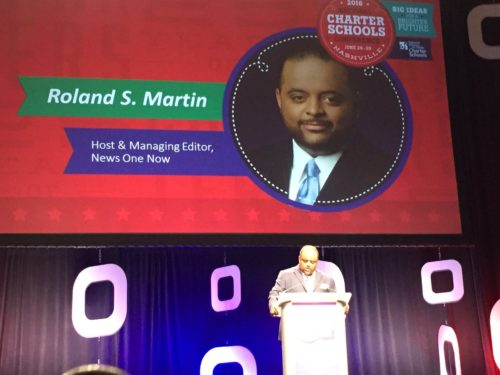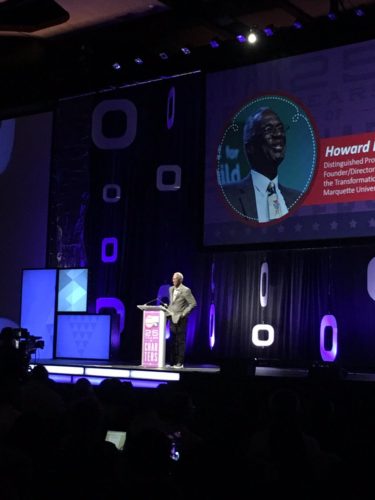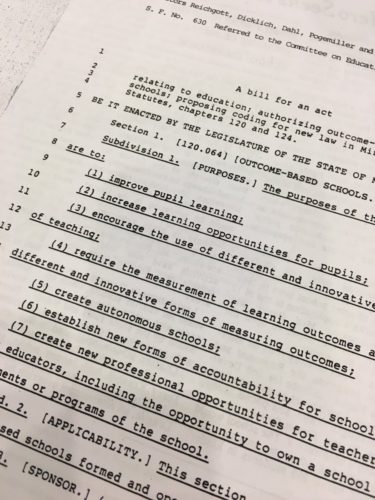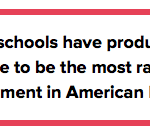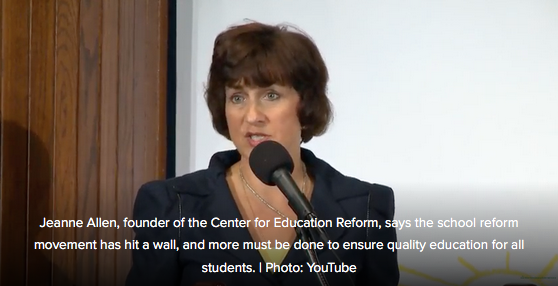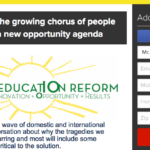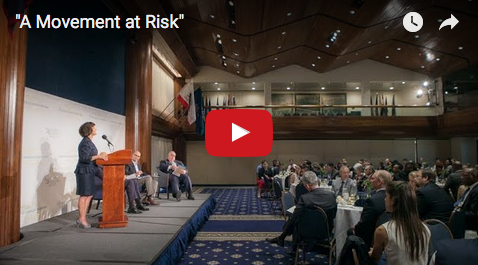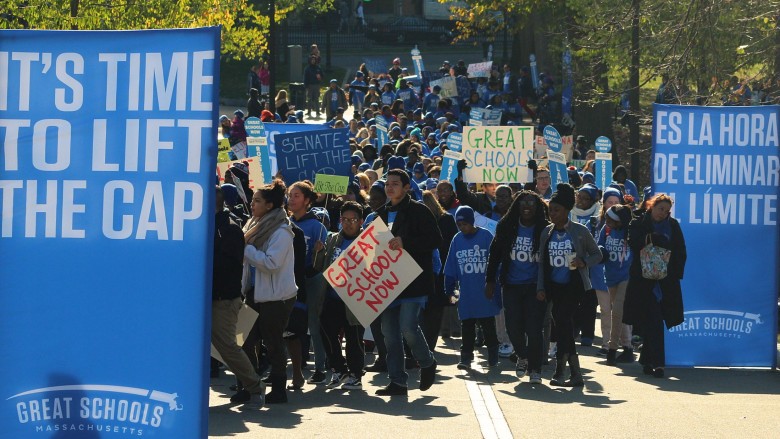Details about North Carolina’s proposed budget that would vastly expand choices for children:
North Carolina legislature proposes budget strong
on K-12 education
Expands Opportunity Scholarship Program, Increases Teacher Pay, Increases Funding for Special Needs School Choice Program
from The American Federation for Children
June 28, 2016
The American Federation for Children, the nation’s voice for educational choice, today applauds the North Carolina House and Senate for their proposed budget strengthening K-12 education and expanding educational opportunity in the state. The budget would significantly increase funding for the North Carolina Opportunity Scholarship Program to give scholarships to nearly 36,000 low-income students over the next 10 years. It also would increase overall K-12 spending by $500 million, including for teacher salaries and the Children with Disabilities Scholarship Grant.
“North Carolina is committed to providing all children with a quality education, and we are pleased with their decision to increase funding for those students and families who are most in need of educational choice well into the future,” said Betsy DeVos, chairman of the American Federation for Children. “We join our allies at Parents for Educational Freedom in North Carolina (PEFNC) in thanking Senator Phil Berger, House Speaker Tim Moore and legislative leadership for giving low-income and special needs families greater access to school choice.”
The North Carolina Opportunity Scholarship Program currently serves over 3,600 children from low-income families. The proposed expansion of program funding would help to meet the widespread demand for scholarships. Funding would increase from $44 million for the 2017-18 school year to almost $145 million for the 2027-28 school year – allowing over 36,000 students to receive a scholarship through the program.
“Today, with more than 22,300 applications submitted for the Opportunity Scholarship Program since its inception in 2013, this proposed budget is an acknowledgement to the thousands of working class families who never gave up on this program in hopes of it being a real game-changer for their children…With hopeful passage of this budget and signature by our governor, North Carolina will palpably demonstrate that this state will no longer allow income and geography to remain barriers to ensuring that all children – especially those who happen to be low-income or disabled – have the opportunity to the best education our state has to offer,” said Darrell Allison, president of Parents for Educational Freedom in North Carolina (PEFNC).
The proposed budget will now go to the House and Senate floor for votes and then to the Governor’s desk.
Historic Expansion of Teacher Pay and Opportunity Scholarships for Low-Income Families in Proposed State Budget Plan
from Parents for Educational Freedom in North Carolina
June 28, 2016
Parents for Educational Freedom in North Carolina (PEFNC) applauds the North Carolina House and Senate for their proposed budget which has a strong, comprehensive focus on K-12 public education. This budget increased K-12 spending by over $500 million and dramatically boosted teacher salaries. The budget also includes a massive funding expansion of the North Carolina Opportunity Scholarship Program that provides private school scholarships worth up to $4,200 to low-income and working class families.
“I, along with thousands of North Carolina families, thank Senator Phil Berger and House Speaker Tim Moore and leadership in both bodies for rightly compensating our valued teachers of North Carolina and for the generous budget designed for the Opportunity Scholarship Program. The compromise budget, in an effort to meet future parental demand for the Program, increases funding from $44,840,000 in 2017-18 (over 10,000 students) to nearly $145 million in 2027-28, or nearly 36,000 students,” said Darrell Allison, president of Parents for Educational Freedom in North Carolina.
“It’s hard to believe that this program was figuratively on life-support just three short years ago plagued with multiple court challenges and legal stoppages and injunctions. Today, with more than 22,300 applications submitted for the Opportunity Scholarship Program since its inception in 2013, this proposed budget is an acknowledgement to the thousands of working class families who never gave up on this program in hopes of it being a real game-changer for their children. Likewise, I salute our state leaders for answering the call. With hopeful passage of this budget and signature by our governor, North Carolina will palpably demonstrate that this state will no longer allow income and geography to remain barriers to ensuring that all children – especially those who happen to be low-income or disabled – have the opportunity to the best education our state has to offer,” said Allison.
The budget now heads to both the House and Senate for floor votes and onto the governor’s desk for approval.
Additional education initiatives PEFNC would like to thank the legislature for including in its budget are:
- Children with Disabilities Scholarship Grant: The budget increases the amount by $5.8 million to over $10 million to provide additional scholarships for children with disabilities for the several hundred families who were currently on the waiting list. This will help families offset the costs of approved educational expenses for their special needs child, which could include private school tuition, tutoring, and other therapeutic services.
- Teacher Pay Increase: Average teacher salaries will rise about 4.7 percent raising the average teacher salary in North Carolina to more than $50,000 this year and above $54,000 over the next three years.
- Teacher 3rd Grade Reading Bonus: Program for third-grade teachers whose students surpass on state-required reading tests. A third-grade teacher can earn up to a $6,500 bonus under this budget proposal whose students excelling at state and district level.













